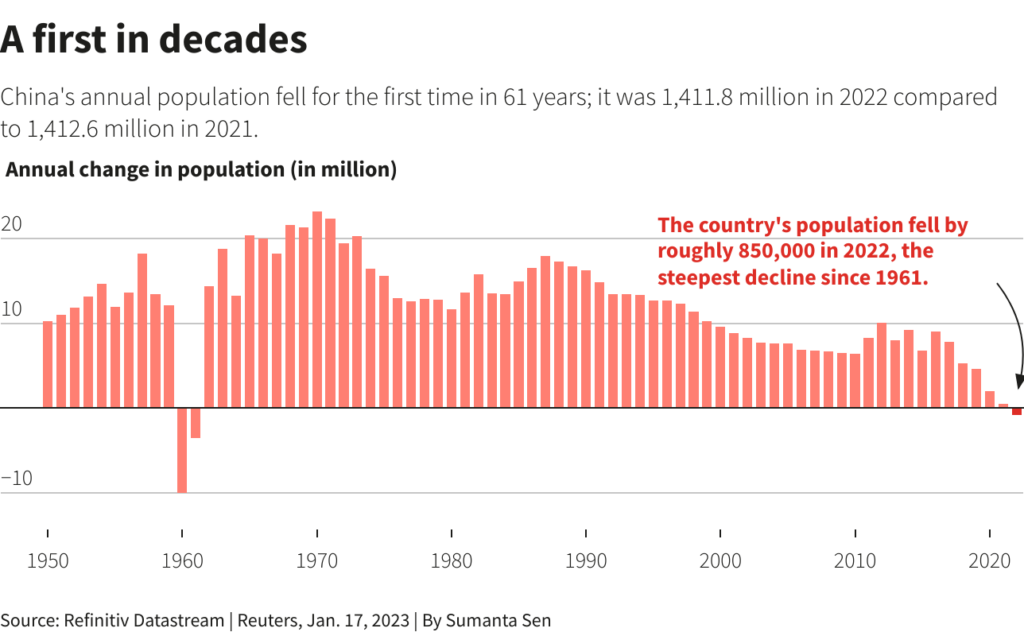For the first time in six decades, China has seen a decline in its citizen numbers with profound implications for its economy and the world.
According to the country’s National Bureau of Statistics, the population figure dropped by roughly 850,000 to 1.41175 billion in 2022, compared to 1.4126 billion in 2021 — the steepest decline since 1961. Birth rates also decreased from a rate of 7.52 births per 1,000 people in 2021 to the lowest birth rate on record of 6.77 births.

The change now possibly makes India the world’s most populous nation, however, India only collects population figures every 10 years and its latest census, originally scheduled for 2021, has been delayed due to the pandemic.
Among the top causes of this demographic downturn include China’s one-child policy imposed between 1980 and 2015 as well as exorbitantly high education costs that have dissuaded Chinese from having more than one child to having none at all. The stringent zero-COVID policies in place for three years may have caused even further damage to the country’s demographic outlook.
According to the data of “China’s Fertility Cost Report 2022 Edition”, the average cost of raising children until the age of 17 in Chinese families is around 485,000 RMB (71,489 USD). In the report, Shanghai reported the highest cost of raising children, with costs as high as 1.03 million RMB (151,823 USD). Shanghai is also home to the lowest fertility rate in China.
After the new population figures were released, many Chinese netizens gathered on the social media platform Weibo to discuss the update, which became one of the top trending topics. As of January 17, the hashtag “Is it really important to have offspring?” has garnered 270 million views and 40,000 discussion mentions. Another hashtag entitled “China’s 2022 annual birth population was 9.56 million” amassed 400 million views and 80,000 related topic discussions.
In previous months, Chinese netizens also complained on social media about pressure on newlyweds to have offspring as soon as possible and have even reported regular calls from their local government asking when they can expect a pregnancy.
In response to the nation’s negative population growth, demographic experts in mainland China suggested increasing the fertility rate by shortening the education system of primary and secondary schools by two years. However, the notion was immediately slammed by netizens online, who listed the current work culture of long working hours, low wages and exorbitantly-priced childcare costs and housing prices as some of the main barriers to starting a family.
Having now entered an “era of negative population growth”, China now grapples with a potential demographic crisis that could shrink China’s labour force and increase the burden on healthcare and other security costs. Such a future would likely impact the Western economic world as well. However, as several netizens have pointed out, China will have to do more than just boost birth rates if they wish to resolve the problems behind China’s slowing growth.









